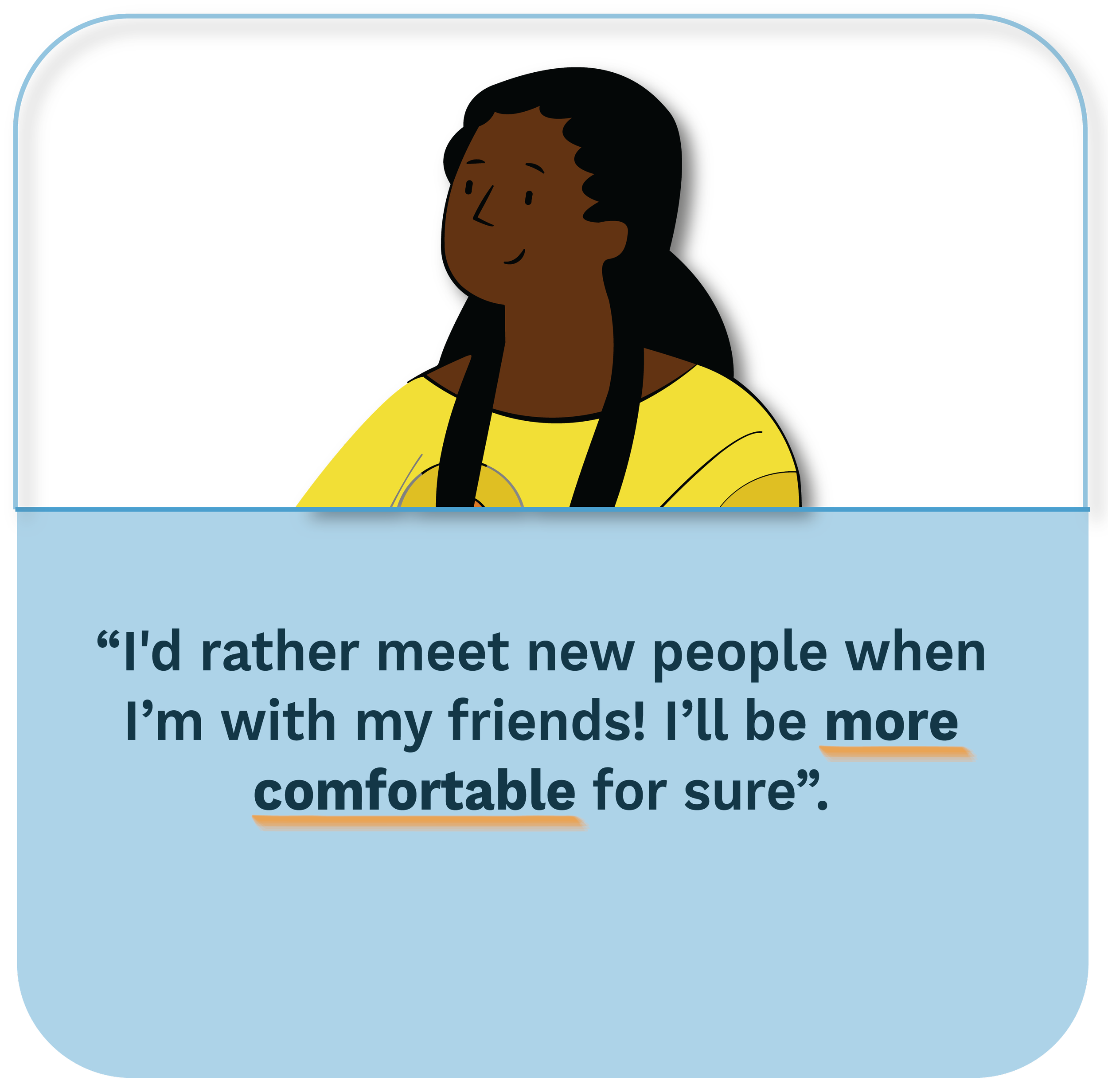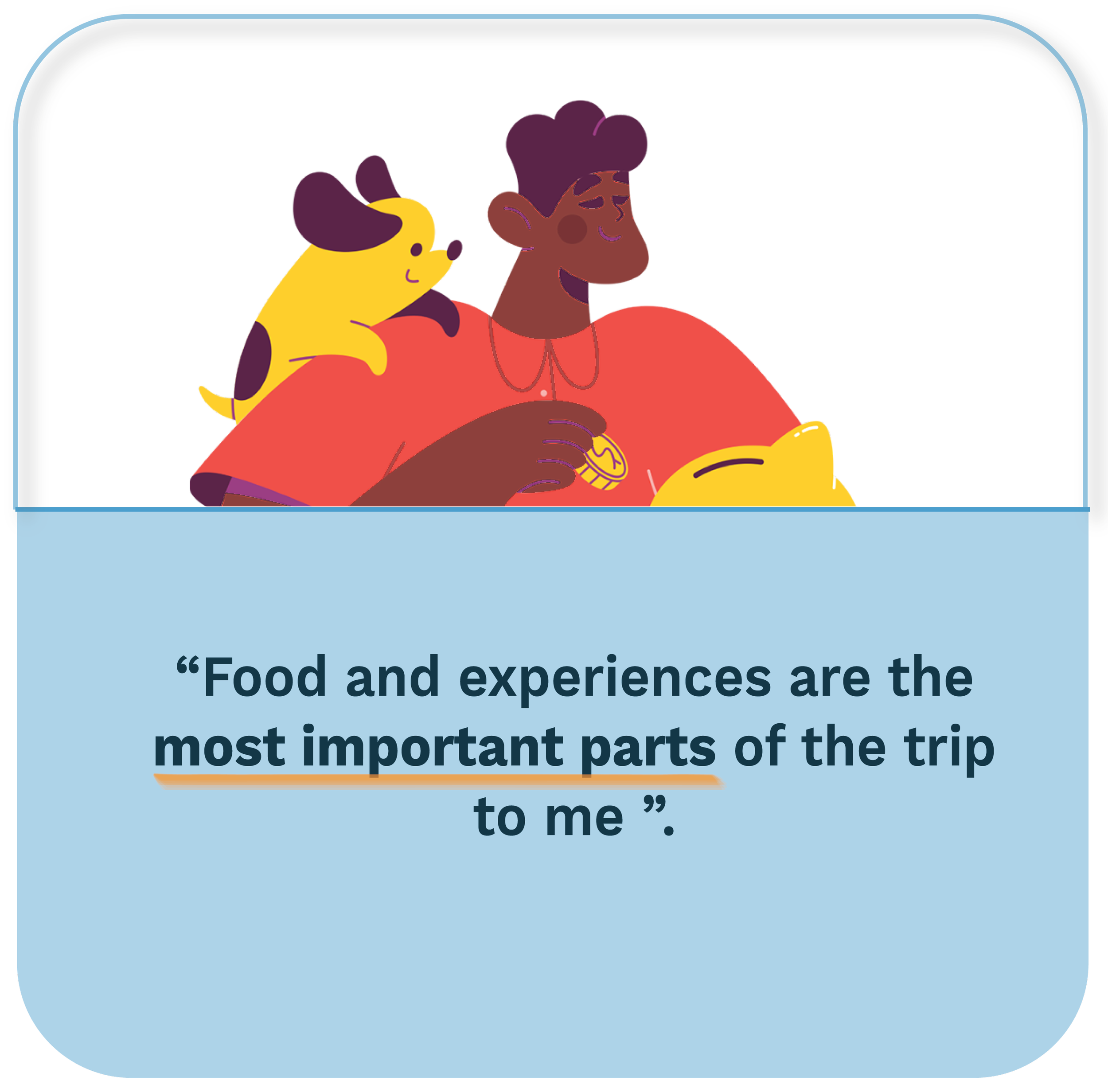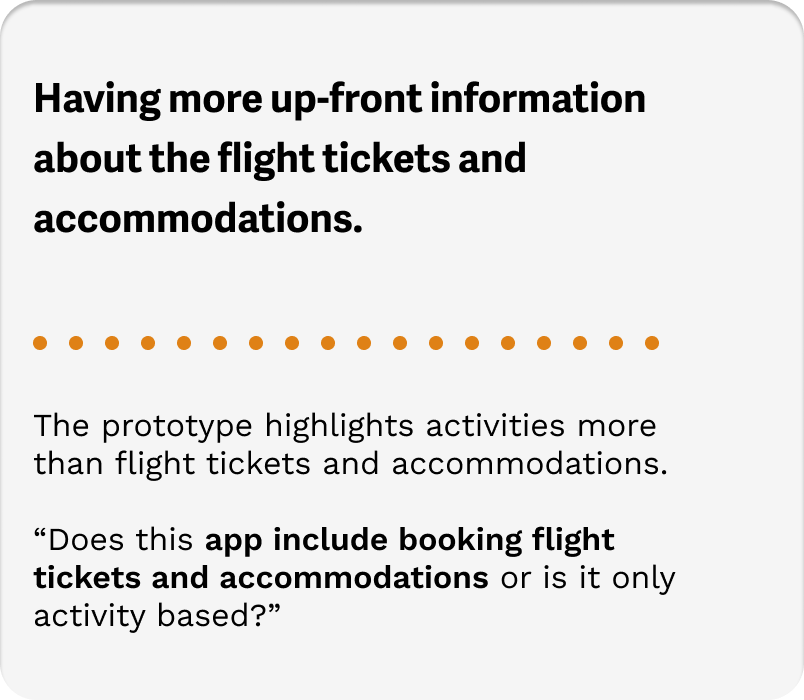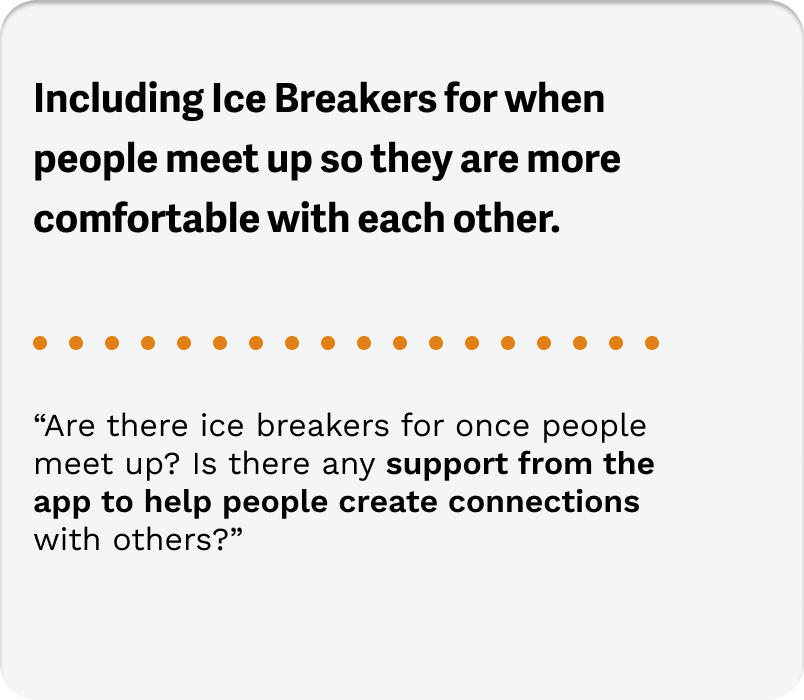
We used this method for rapid prototyping. This method helped us quickly ideate solutions and decide which was most feasible. With the prompt being: “What comes to mind when thinking of trip planning”, we brainstormed ideas that would meet user needs based on our analysis and reflection.
As a group, we generated several quick storyboards, aiming to illustrate several solutions with varying degrees of risk, in order to assess user needs in the problem space.
The speed dating helped bring out common misunderstandings between us and the user, through the proposed solutions and their feedback.
Based on past research, our affinity diagram and the models we created using insights from them, we broke down the needs and questions while highlighting the insights and further analyzing them in conversation. we started out with background research.
We then collected the data from the Interviews and Think Aloud sessions we conducted with participants. After writing down key data, we organized and synthesized them into different categories such as safety, constraints and travel preferences.
Following this, we created an insight wall looking at the needs, design ideas and further questions that require answers. We walked the wall together and shared ideas that popped into our heads from the information we had gathered.
The speed dating session, people were able to talk more freely about what will not work as they understood the storyboards were rapidly made just for testing the concept.
After multiple iterations and brainstorming, we decided on a Solution:
A platform allowing friends to connect with other travel groups and book discounted experiences together, ensuring users reduce travel expenses. The app allows users to purchase tickets and plan itineraries as a group too. All users of the platform will be verified via passport documents to ensure the safety of all participants. We started development by creating Wireframes.
Next, we gathered feedback on our Wireframes, made improvements, then created Prototypes:
We revised the layout to have better spacing, and incorporated a message notifying the user that they were not committing to anything by swiping right; in order to build user trust and remove any confusion that may arise from swiping. When including interactions, we were cautious of any distracting actions or misleading prompts, so as not to distract from the information we are aiming to supply.
After Prototyping, we conducted Usability Tests:
Our goal was to use the results from our tests to decipher if our solution was effective. Our follow up interview questions were:
. Did the app help ease the hassles of trip planning?
. Was it easier to find discounts and people to travel with?
. Would you trust the app when trip planning?
We gathered responses and came up with a list of ways to improve in the future.






































